#jung freud
Text




Saving Pride by feeding you the ship you've always been denied for 35 years
I need more ideas send me asks idk
500 notes
·
View notes
Text

運動するにゃ!
227 notes
·
View notes
Text
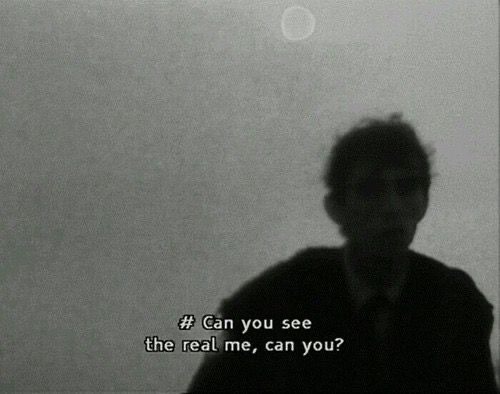
Carl Jung (1875-1961) considered psyche as a self-regulating system.
He wrote: "by psyche I understand the totality of all psychic processes, conscious as well as unconscious". The psyche strives to maintain a balance between opposing qualities while at the same time actively seeking its own development or as he called it - individuation.
Jung described psyche as a combination of a person's conscious and unconscious mind, mainly focusing on the 3 most important components: Ego, The personal unconscious and The collective unconscious.
Jung's philosophy about Personality is something I want to focus on this time. He distinguishes 2 main parts of an individual - Persona and Shadow.
Persona - is a part of the personality which comes into existence "for reasons of adaptation or personal convenience". The origin of the term comes from the mask worn by Greek actors in antiquity and denotes the part of the personality which we show to the world. The persona has been called "the packaging of the ego" or the ego’s public relations person, and is a necessary part of our everyday functioning. We might even say that our social success depends on having a reasonably well-functioning persona, one which is flexible enough to adapt to different situations, and which is a good reflection of the ego qualities which lie behind it.
Shadow - carries all the things we do not want to know about ourselves or do not like. The shadow is a complex in the personal unconscious with its roots in the collective unconscious and is the complex most easily accessible to the conscious mind. It often possesses qualities which are opposite from those in the persona, and therefore opposite from those of which we are conscious. The way in which we most immediately experience the shadow is as we project it on to other people, so that we can be fairly sure that traits which we cannot stand in other people really belong to ourselves and that we are trying to disown them.
So... let's take a moment and ask yourselves - how many people know "the real you"? who's familiar with your shadow - the darkest, the most gruesome and evil place of your mind? the part of yours you are trying so desperately to hide?
#writing#essay#thoughts#authors#literature#writers and poets#philosophy#carl jung#jung#shadow#my persona#persona#zigmund#sigmund freud#jung freud#consiousness#unconscious#personality types#animus#philosopher#small piece of mind#real me#fyp
21 notes
·
View notes
Text
SENTIMIENTOS NEGATIVOS EN EL PROPIO ANALISIS
Mucho que decir, o no, cuando el propio análisis te sacude. Es interesante que algo así ocurra, sino no sería psicoanalisis. El poder experimientar una cierta incomodidad o angustia es algo del proceso terpéutico y habla que el analista tocó efectivamente algo del paciente.
Si fuese que no sacudiría, no habría efecto, no habría algún cambio. Debe incomodar de vez en cuando y no está mal que algo de eso suceda. Ya que nosotros como pacientes tendemos a repetir en analisis lo que repetimos en nuestra propia vida, en la cotidianidad con nuestra pareja, nuestros hijos, nuestros amigos, nuestros padres, nuestras relaciones laborales, etc.
El analista aquí tiene que tocar algo ahí y no responder a la misma repeticion que sintomáticamente vuelve y revuelve siempre. Y ese aporte no va a ser sin angustia de parte del paciente porque efectivamente va a incomodar, y es una incomodidad que tiene encima el estatuto de ser sumamente vedado, es decir, uno se encuntra ciego completamente frente a esto, le es imposible verlo y si lo ve, no le deja aún de molestar esa intervención: Porque es ahí cuando el analista lo señala que lo ve, y como dice Lacan, el sujeto no quiere saber nada de su propia verdad, porque "la verdad es siempre subversiva". Esto a todos nos toma de sorpresa.
Por lo tanto creo que es interesante que cuando surgen sentimientos hostiles o negativos para con nuestro propio analista, a la vez que los pensamientos de dejar rapidamente la terapia, creo que es importante preguntarnos y ser lo mas objetivo posible, si es que efectivamente algo de nuestro propio síntoma, de nuestro propio cuentito que nos contamos y que queremos seguir contandonos, no se esta trabajando en el analisis y que el analista estaría tocando algo de esto. A la vez que quizás sería tambien frutcifero hablarlo con alguien que conozcamos y tambien este haciendo analisis.
No vamos a "curarnos" siguiendo protocolos o consejos. Vamos a cambiar algo de nuestra posición subjetiva pasando y dejando frente a nuestra mirada algo de la relacion tranferencial con nuestro analista.
#psychoanalysis#psicología#psychology#psicoanálisis#psicoanalista#literature#freud#sigmund freud#jung freud#philosophy#salud y vida#mente sana
5 notes
·
View notes
Video
youtube
REGRAS da CASA ,Como ENSINAR Seus FILHOS as REGRAS da CASA e RESPEITA_LAS
1 note
·
View note
Text
ROSE: That dream you had is very interesting, Dave.
ROSE: Freud would say it's indicative of intense sexual repression due to dealing with your brother so often, and having little physical freedom.
ROSE: Although Jung would say that it has nothing to do with sex, and simply indicates that you want to be a person with more of a purpose in life.
ROSE: Then Freud would say, "No, that's stupid. Purpose is so vague and hardly means anything about the patient or the dream. The interpretation of the genital fixation makes far more sense."
ROSE: Then Jung would retaliate with, "Not everything is about sex, you idiot! He's a teenager! How much could unconscious sexual desires affect him? And purpose just means that there is a lack of direction in his life. He wants something to do, something to strive for! Shouldn't we try to help him find that purpose instead of just attributing everything to this reductive view of human psychology?"
ROSE: Then Freud would go, "Perhaps you're right. But you can't deny that something is being repressed here. Maybe not sexual desire, but there is certainly a desire for something other than purpose."
ROSE: Then Jung would say, "Not really. What else could it be? Love? That's just an offshoot of sex in your view. I don't get what it could be at all."
ROSE: Freud would nod sternly and say, "Perhaps the patient desires connection. Not necessarily closely tied to purpose, but connection to others in the world is something he needs. That's what the globes in the dream represent. Connection to the world, something other than the living space he is stuck in. That's certainly a major effect of having no mother figure in childhood."
DAVE: rose
ROSE: Jung would sigh and say, "Connection. I see. Maybe that's something we all desire innately. We need to connect to each other and the world in order to understand what we need to do."
ROSE: Freud would take a step towards Jung and reach out a hand, saying, "Jung. We disagree so often that it feels there is no connection in the world. But I know we know each other. We can understand what we mean. If we all desire connection, that includes you and me. Let's try to connect more with each other, okay?"
DAVE: rose
ROSE: Jung would take Freud's hand and pull him close to his face, just inches apart from each other, and softly whisper, "Freud, you know that when I disagree with you, it's more because I envy you. I want to connect with you more, we can satisfy our... deepest desires, as you say... and become the ideal people we want to be if we are closer."
DAVE: ROSE
ROSE: What?
DAVE: shut up
DAVE: i did not sign up for your psychologist fanfiction
DAVE: tell me if im gay or not
#submission#i embodied the character of rose so powerfully that i started writing a lot more than i expected#sorry lol#//Wait I’m sorry you wrote this?? You spontaneously wrote psychologist yaoi?#You just straight up wrote Freud x Jung (Frung if you will) into our inbox?#Mad respect but What#homestuck#incorrect homestuck quotes#incorrect quotes#Mod Dash#rose lalonde#dave strider
188 notes
·
View notes
Text
Punarvasu & Swati: Cosmogony, Reality & Consciousness
Punarvasu and Swati are deeply intertwined nakshatras with very similar patterns and themes. Punarvasu's deity Goddess Aditi embodies infinity and vast primordial space. She is boundless and limitless. Swati's deity Vayu is the ruler of air & wind and connected to the life force or prana (or qi).
Both these nakshatras connect to space, infinity, abundance and are known for being wealth giving nakshatras.
Ruth Handler, the inventor of Barbie had Swati Sun & Mercury along with Ketu in Punarvasu
Margot Robbie who played Barbie has Swati Moon & Punarvasu Rising
I had briefly mentioned this in my Tomie post but Swati & Punarvasu's themes are manifest in Barbie because Barbie is not a person, she is a type of doll, and she can be anyone or anything. Barbie is a whole universe into herself, this is the cosmic abundance and infinitude of Swati & Punarvasu.

My Tomie post also talks about how Tomie is a Punarvasu so do check that out!!
I have always thought that Punarvasu & Swati are related to time travel which makes sense provided the cosmic infinitude embodied in these naks.

Predestination, a time- travel movie starring Ethan Hawke who is Swati Sun (do watch it, its really good))

Bruce Willis has been in several time-travel movies, including 12 Monkeys & Looper. He has Jupiter in Punarvasu atmakaraka

The 1960 movie The Time Machine stars Rod Taylor who has Ketu in Swati.

The Terminator movies starring Arnold Schwarzenegger- Punarvasu stellium (mercury, venus & rising). Arnold like many Punarvasus have been in many sci-fi movies that concern the nature of reality, in fact his own autobiography is called Total Recall (he's been in a movie of the same name and its about what is real and what isn't- peak Punarvasu behaviour I must say)

Planet of the Apes stars Charlton Heston who has Punarvasu Moon, Swati Rising

Frequency stars Dennis Quaid who has Punarvasu Moon & Ketu
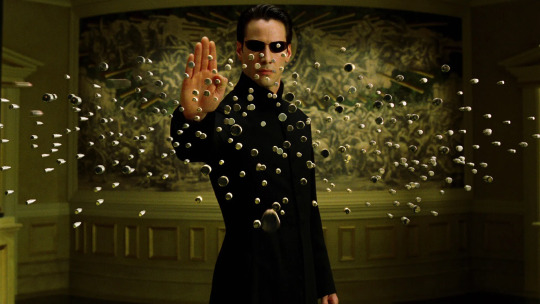
The Matrix/ The Lake House/Bill & Ted's Excellent Adventure are all time travel movies starring Keanu Reeves who is Punarvasu Moon.
Its interesting to me that many Punarvasus have often spoken about "creating your reality".
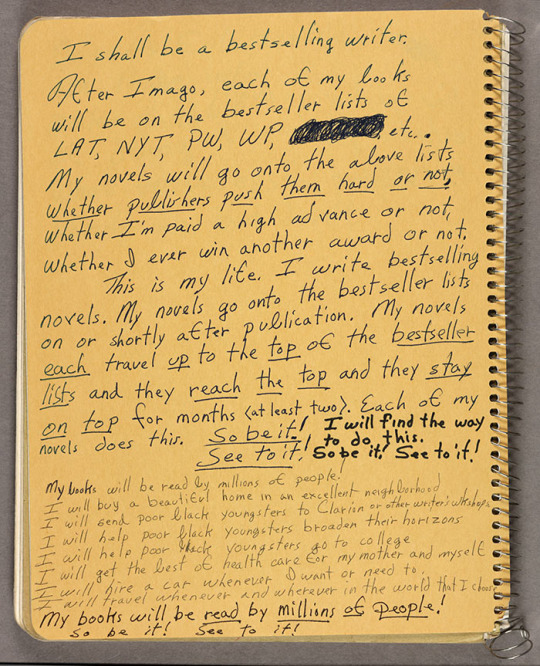
Octavia Butler, the writer has Punarvasu Rising (the themes of this nak is vv apparent in her work but I'll perhaps discuss that in a future post) and this^^ is a page from her journal that she wrote in the 1970s wayyy before manifestation was a "thing".
Butler grew up very poor in an era of racial segregation and suffered from dyslexia. She overcame great odds to become one of the best-selling sci-fi novelists of all time.

Miranda Kerr- Punarvasu Moon often talks about the power of our thoughts and has referenced writers like David R Hawkins (who talks about the nature of consciousness) a lot. Here's a quote from her book.
“Start each day by saying to yourself: ‘How amazing it is to be alive! What a wondrous feeling I have inside! I am awake, healthy and full of joy!’ Visualise every cell in your body being filled with vitality, health and love.”- Treasure Yourself
Miranda grew up quite lower middle class on a farm in rural Australia and then went on to become one of the best known models in the world and is now married to a billionaire.
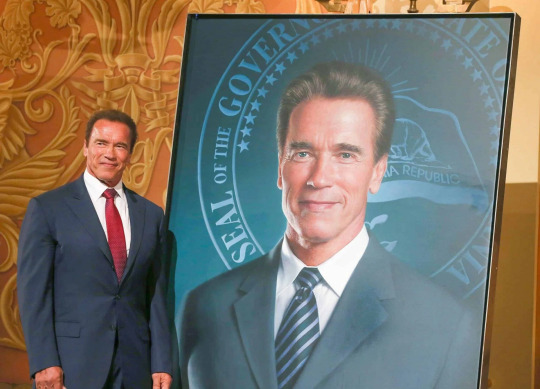
Arnold Schwarzenegger- Punarvasu Rising (and stellium)
If you've read his autobiography or watched his Netflix documentary yk that he talks constantly about the power of the mind, having focus etc
He grew up in a small town in Austria (after WW2) with an abusive father and also suffered from dyslexia. He then went on to become one of the biggest movie stars of all time and was the Governor of California???

Ariana Grande- Mercury in Punarvasu sings about manifestation and law of attraction quite a lot. She was a side character on a Nickelodeon show and 10yrs later she's one of the biggest pop- stars.

Nikola Tesla, Punarvasu Sun & Venus
Tesla discovered automatic current transmission & generation technology which is responsible for modern day wireless connections. He's also super Punarvasu core as a person, he had eidetic memory, apparently did not sleep more than 2 hours per night, was interested in Vedic cosmology & philosophy (he used terms like akasha & prana to describe the relationship between matter & energy). I find this quote by him very interesting, "To me, the universe is simply a great machine which never came into being and never will end". I personally don't believe in the Big Bang theory and I'm inclined to believe that the universe has always existed instead of having come into existence at one point, which imo, is a very anthropocentric idea. Tesla's quote is a reflection of the boundless nature of Aditi, who is the cosmic mother, she embodies creation.
fun fact: Elon Musk who named Tesla after him is Punarvasu Mercury & Rising.
Interestingly enough, several decades before the Big Bang theory gained mainstream acceptance and was studied by scientists, Edgar Allan Poe published a lecture/essay on the matter titled Eureka: A Prose Poem in 1848 (!!!!). He had Swati Rising
Can you believe that he, a man with zero scientific background essentially came up with ideas that would serve as the basis of 20th century scientific discoveries & theories??? That too in 1848???
Analysis of Eureka's scientific content shows congruities with modern cosmology, stemming from Poe's assumption of an evolving Universe and it also contains ideas about the unity of space and time, the mathematical equality of matter and energy, the velocity of light and a rudimentary concept of relativity, black holes (including one at the centre of our Milky Way), a "pulsating" universe that renews itself eternally, and other universes in other dimensions with different laws of nature.
A writer & poet who dropped out of college came up with all that in 1848. Swatis & Punarvasus have the ability to understand complex concepts, systems, and processes intuitively. This is why they are so good at analysis, strategy and planning. They have a futuristic vision because its easy for them to see how current events will affect other things and manifest in the future. Those who don't have these placements will struggle to understand what this is like because most of us aren't endowed with this sort of ability to see the trees and the forest all at once.
Interestingly, the scientist Georges Lemaître who first proposed the "Big Bang theory" of the origin of the universe, calling it the "hypothesis of the primaeval atom", and later calling it "the beginning of the world" is a Punarvasu Sun.
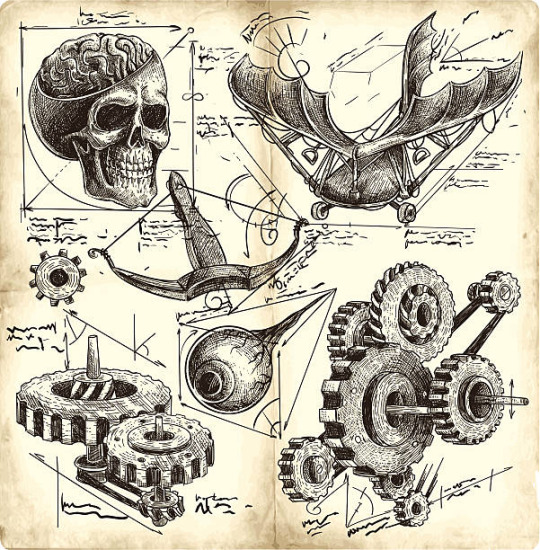
Leonardo da Vinci is known for his foresight and is considered a visionary. He, in the 15th & 16th centuries, pondered upon the possibilities of human flight and left behind diagrams and models of the helicopter, the parachute, the machine gun, the humanoid robot, the revolving bridge, the ideal city and much more. He had Ketu in Punarvasu.
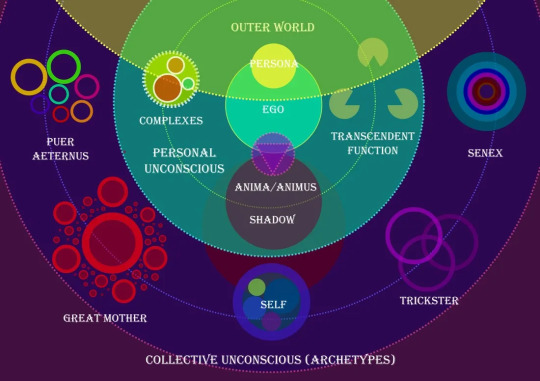
Carl Jung created some of the best-known psychological concepts, including synchronicity, archetypal phenomena, the collective unconscious, the psychological complex, and extraversion and introversion. He had Punarvasu Mercury & Venus and it explains why there was such a heavy emphasis on "darkness" vs "light" in his work (Punarvasu being "the return of the light").
He is the father of Analytical Psychology which seeks to "analyze the relationship between a person's individual consciousness and the deeper common structures which underlie them. Personal experiences both activate archetypes in the mind and give them meaning and substance for the individual. At the same time, archetypes covertly organize human experience and memory, their powerful effects becoming apparent only indirectly and in retrospect. Understanding the power of the collective unconscious can help an individual to navigate through life."
In fact, vedic astrology (Jung did use astrology as well btw) serves as a very interesting way to explore the collective unconscious and the many archetypes that are manifest in individuals possessing them.
I will make a post in the future comparing Freud & Jung and how their different astrological placements contributed to their similar but differing views.
George Orwell, who was a fierce critic of totalitarianism had Swati Rising, if you read his works, you can see how he's able to analyse the effects and consequences of the same, especially 1984 which was sooo ahead of its time in the sense that much of what was written in the book is eerily similar to what's going on in the world right now. The novel examines the role of truth and facts within societies and how they can be manipulated.
Swatis & Punarvasus are super Futuristic, as individuals or visionaries as well as in their art & work. They dominate in the surreal/scifi genre.
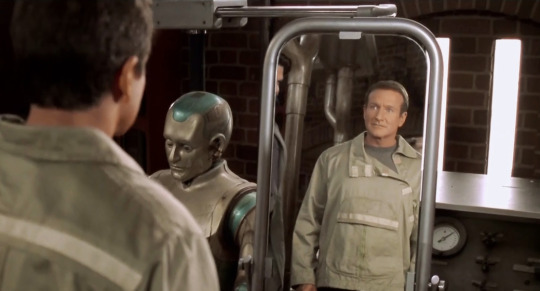
Robin Williams- Swati Rising stars as an android in Bicentennial Man which is a movie about a robot who learns how to be human. Transcending humanity is a big theme in the works of Swati natives.
On this note, I have noticed several Swati & Punarvasu natives star in movies featuring/about cloning 👀 This does not surprise me as I had already mentioned this in my Tomie post but it is fascinating how Swati & Punarvasu's ability to be many many versions of themselves is made manifest in this trope of clones.
I have to mention how both Rahu & Jupiter have a very boundless, obese energy that is hard to contain. This can be manifest negatively because its very easy for energy of this proportion to be misused and misdirected but when they're harnessed positively, these individuals are capable of envisioning change that have few/no other parallels.
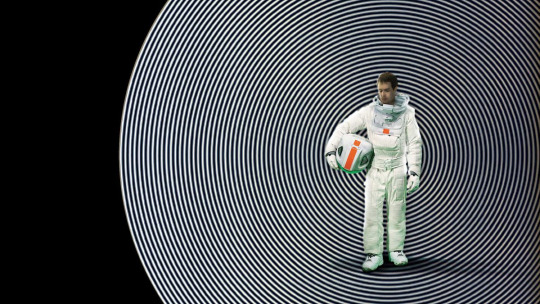
Moon (2009) is a movie that features the main character and his clones. Sam Rockwell, Swati Sun plays the main character.

Tom Cruise, Punarvasu moon (acc to Claire Nakti) stars in Oblivion and plays a clone of himself. One version of him is good, his "clone" is evil. The battle between good & evil within oneself is a VERY Jupiterian trope (and I shall make a post solely about that in the near future).

Multiplicity is a 90s scifi-comedy about a guy who clones himself so that he can do all the things he wants to do. Michael Keaton who plays the protagonist has Swati Moon
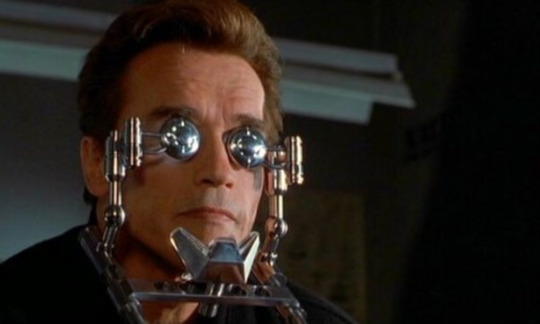
The Sixth Day is a movie starring Arnold Schwarzenegger (Punarvasu stellium) and it is about cloning. The title is a reference to the Abrahamic Genesis concept of how God created mankind on the sixth day.
This in itself is very interesting because Punarvasu is the 7th nakshatra and in the Bible, it is said "And on the seventh day God finished the work that he had done, and he rested on the seventh day from all his work that he had done. So God blessed the seventh day and made it holy because on it God rested from all the work that he had done in creation."
7 is a number that has profound spiritual meaning and is present in many religions as a figure of significance. From this verse taken from the Book of Genesis, it is interesting to note that ""7" is the culmination of creation. It is the day on which God rested because he had already created. It is not nothingness, it is the day on which everything already existed. This is a significant Punarvasu theme.

Replicas stars Keanu Reeves (Punarvasu Moon) as a neuroscientist who tries to revive his deceased family members by cloning them.
Its interesting how in these films, natives appear either as a clone or as the ones who do the cloning, furthermore connecting it back to Punarvasu's creation trope.

Harrison Ford, Punarvasu sun & moon stars as in and as the Blade Runner (1982) where he must "pursue and terminate four replicants who stole a ship in space and have returned to Earth to find their creator."

David Cronenberg is a director best known for making really weird, surreal, futuristic movies that heavily feature themes related to the nature of reality, consciousness etc
He is a Punarvasu Moon & Jupiter
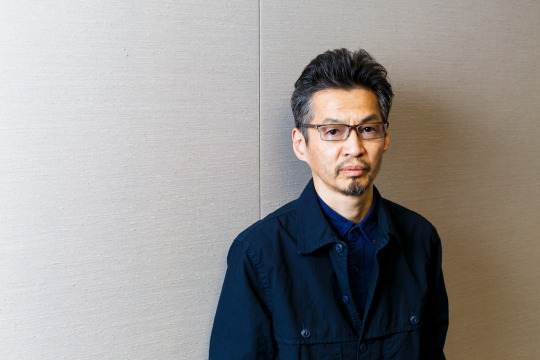
Gakuryu Ishii, Punarvasu Moon is another filmmaker who makes movies that heavily centre around truth, reality, consciousness, the future etc.
I recommend his movie Mirrored Mind which heavily deals with identity, consciousness etc (its vaguely reminiscent of Perfect Blue)

Robert de Niro Punarvasu Rising, stars in the movie Awakenings (based on a true story) as a catatonic patient who has an "awakening" before tragically going back into catatonia, Robin Williams, Swati Rising stars as the doctor who administers a drug that induces this awakening.
In Vedic philosophy, there are 3 gunas, Rajas, Tamas & Sattva.
Tamas is a state of darkness, inertia, inactivity,
Rajas is a state of energy, action, change, and movement.
Sattva is a state of harmony, balance, joy, and intelligence.
Punarvasu belongs to the Rajas guna whereas Swati belongs to Tamas guna.
Tamas can be described as a state of statis or stagnation as there is no transformation and thus no change. Punarvasu natives are prone to passivity and it is only when they face their own destructive shadow, do they emerge out of passivity to their natural state of Rajas. In this movie, Deniro's experience where he emerges from his catatonia with a desire for freedom and to live life to the fullest before eventually accepting the fact that his condition cannot be remedied inspires the Doctor played by Robin Williams to emerge out of his own shell and live life more fully.
Punarvasus are often restricted by situations beyond their control yet they are possessed by a yearning to live life to the fullest. Swatis often have unmeasured freedom and do not know how to utilize it, they are restricted by their own character.
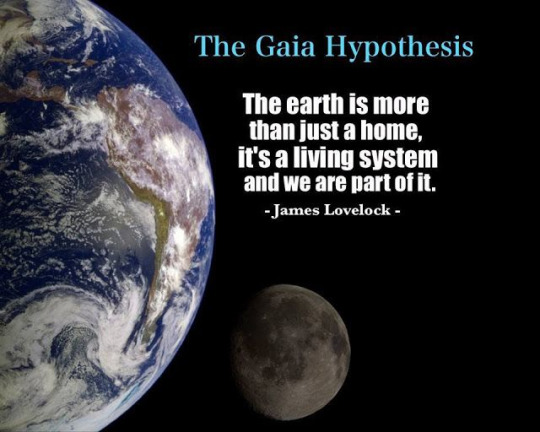
The Gaia Hypothesis proposed by James Lovelock (1972) suggests that living organisms on the planet interact with their surrounding inorganic environment to form a synergetic and self-regulating system that created, and now maintains, the climate and biochemical conditions that make life on Earth possible.
It is a holistic view, which is generally not appreciated in science that likes to favour randomness, chance or whatever instead of the innate harmony and union behind creation.
James Lovelock has Punarvasu moon & Swati rising
Lynn Margulis who co-developed this theory with him most likely has Revati Moon and I will be exploring her symbiotic view of evolution on a different post as it goes beyond the scope of this one.
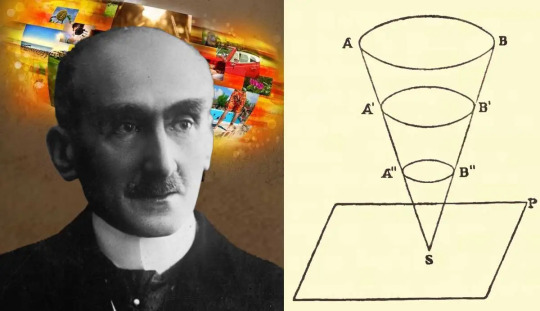
Edit: as @brundlefly333 pointed out, the French philosopher Henri Bergson (Punarvasu Moon) has a book called Creative Evolution which extrapolates that whilst "evolution of species can come from external factors "like natural selection", it most importantly (comes) from an internal impulse (a creative force). This creative force is inherently unpredictable and non-linear, leading to the emergence of novelty and complexity in living organisms over time.
I find his "Cone of Memory" (depicted above) hypothesis very fascinating.
The Cone of Memory model can be imagined as an inverted cone, with the apex representing the present moment, the base symbolizing the entirety of one’s past experiences, and the cone’s vertical axis signifying the flow of time. As the present moment progresses, the apex of the cone moves upward along the axis, continuously stretching the cone outward as it incorporates new experiences and memories into a person’s consciousness. The memories from our past experiences are layered into the cone, with the most recent memories residing closer to the apex and older memories located further down, towards the base.
Bergson’s model emphasizes the active role of individual perception, memory, and experience in shaping one’s consciousness. The human mind, as depicted by Bergson, interacts with the objective world while drawing from its accumulated memories to create individual experiences in real time. The Cone of Memory focuses on the dynamic interplay between perception, memory, and experience, hoping to account for the generation of novel understandings and interpretations of reality.
Bergson’s emphasis on experience at the personal level also has significant implications for how we understand the self. In his view, the self is not a static entity but rather a constantly developing process, shaped by the dynamic interplay of perception, memory, and experience. This more fluid conception of the self contrasts sharply with many traditional notions of a fixed, unchanging identity. It also invites us to recognize the transformative power of our own experiences and encounters in the continuous interweaving of the past and present in our temporal consciousness.
It can be summed up with this quote:
"To exist is to change, to change is to mature, to mature is to go on creating oneself endlessly"- Henri Bergson

Rudolf Steiner- Ketu in Punarvasu, Swati rising
Steiner's breadth of work encompasses many fields, he pioneered modern-day organic farming, anthroposophical medicine (what we call alternate medicine including homeopathy, massages and frequency work etc rooted in the human body's ability to heal itself) invented the Waldorf education system (alternative schooling) and tried to merge science and spirituality.
All of this is vvv Punarvasu & Swati coded because its these natives who are frequently drawn to non-traditional systems of thought & experience and also merging a vast variety of techniques + being well versed in a lot of different fields etc comes down to having the inner space to hold all of it. This is literally not something most other people can do. Pursuit of knowledge can easily drain/deplete people but Punarvasu & Swati natives have a boundless thirst for knowledge and innately understand the profound truth that everything is connected.
Symbiosis, synergy, syncretism etc are all themes prominent in the works of Swati & Punarvasu natives who tend to view things as a coherent whole and not separate from one another; everything in creation exists to serve one another and exist in perfect harmony. Its not by "accident" that human beings took shape on earth where all the elements exist to continually support human life, every tiny detail is manifest in divine perfection and it helps us understand that we are a part of a larger system and that what we do affects changes at both the micro and macro level.
"Synergetics is the empirical study of systems in transformation, with an emphasis on whole system behaviours unpredicted by the behaviour of any components in isolation. R. Buckminster Fuller (1895–1983) named and pioneered the field. His two-volume work Synergetics: Explorations in the Geometry of Thinking."
Buckminster Fuller had Punarvasu sun & jupiter
I think I had made a post about how Punarvasu natives tend to make geometric art that features repetitive patterns and motifs. I thought Fuller's use of the term "Geometry of Thinking" was very Punarvasu of him.
Pls look him up and his work, its very interesting and if you have Punarvasu placements you might find things you resonate with. I dont want to make this post any longer so I'm not including more of his work although all of it really fits with the theme tbh.
Amartya Sen, the Indian economist and philosopher has Swati Sun, he is best known for his contributions to welfare economics, social choice theory, and development economics. His work incorporates the same holistic view of how everything exists in close interaction with everything else, interconnectedness as well as an all encompassing-ness are themes that dominate his work. Society affects the market, the market affects society, all of this affects interpersonal relationships, it takes a Swati/Punarvasu native to deeply embody this sentiment in their thought/work.

George Harrison aka the Spiritual Beatle had Swati moon, Jupiter in punarvasu amatyakaraka.
"It's being here now that's important. There's no past and there's no future. Time is a very misleading thing. All there is ever, is the now. We can gain experience from the past, but we can't relive it; and we can hope for the future, but we don't know if there is one."
This quote by him really sums it up.

Robert A Heinlein had Punarvasu sun, jupiter and rahu
Heinlein used his science fiction as a way to explore provocative social and political ideas and to speculate how progress in science and engineering might shape the future of politics, race, religion, and sex. Within the framework of his science-fiction stories, Heinlein repeatedly addressed certain social themes: the importance of individual liberty and self-reliance, the nature of sexual relationships, the obligation individuals owe to their societies, the influence of organized religion on culture and government, and the tendency of society to repress nonconformist thought. He also speculated on the influence of space travel on human cultural practices.
This is yet another example of the interconnectedness of Punarvasu as well as the analytical nature of these natives.
I will end this post here because I've been rambling for too long but I hope this was informative!! Apologies that this was kinda science heavy and not very pop culture centric :/
#vedic astro notes#astrology observations#sidereal astrology#vedic astrology#nakshatras#astrology#astro notes#astro observations#astrology notes#astroblr#Punarvasu#swati#Jupiter#rahu#carl jung#Freud
265 notes
·
View notes
Text
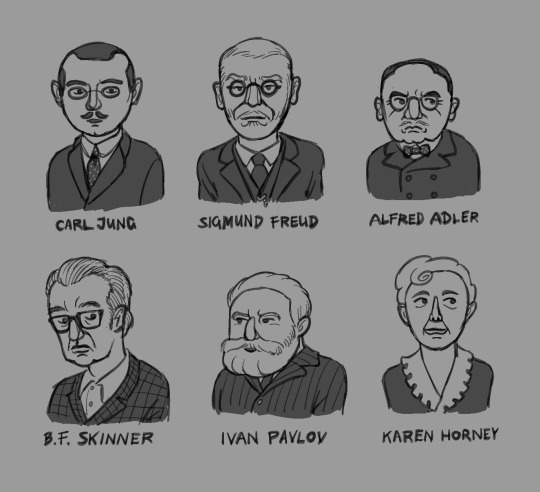
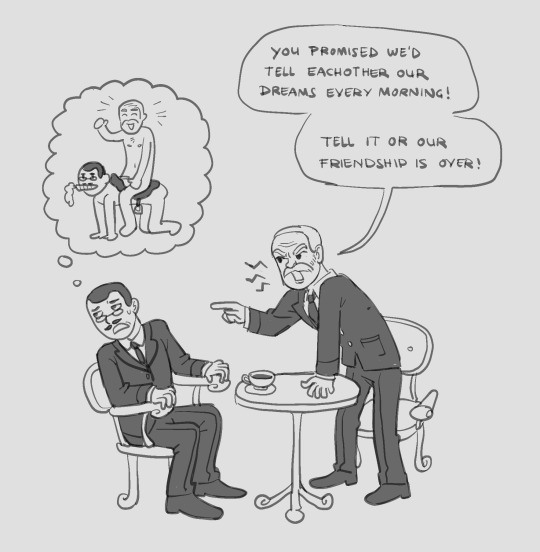
carl jung and sigmund freud had breakfast together every other morning and told eachother their dreams. one day jung kept his dream secret and freud promptly broke the friendship. i wonder what the dream was ....
#its 3 am and i realized i can draw anything i want. youre welcome#art#drawing#illustration#doodle#sketch#sigmund freud#carl jung#alfred adler#b f skinner#ivan pavlov#karen horney#my art#psychology#psychoanalysis#history
41 notes
·
View notes
Text
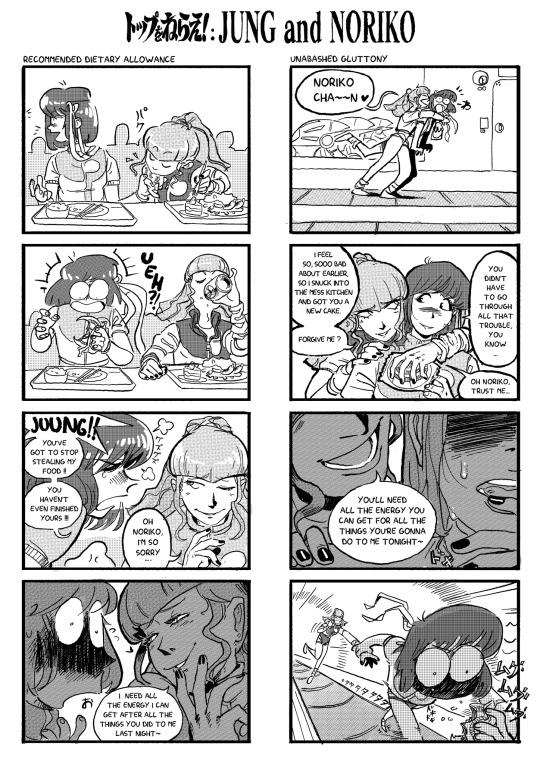
230 notes
·
View notes
Text
sevdiğini ilan etmek, eksik olduğunu, iğdiş edildiğini ilan etmektir. sevmek sahip olmadığınız bir şeyi vermektir.
bruce fink - lacan'da aşk
#kitap#edebiyat#blogger#felsefe#kitaplar#blog#kitap kurdu#charles bukowski#friedrich nietzsche#psikanaliz#jacques lacan#lacan'da aşk#lacancı özne#aşk#simone de beauvoir#love letters#sigmund freud#carl jung#psikolojide tipler#marcel proust#oscar wilde#kitap okumak#julia kristeva#serol teber#alfred adler#jean baudrillard#alain de botton#platon
37 notes
·
View notes
Text
There's a scene in the first season of Babylon Berlin where a characters reads a lecture on psychoanalysis and PTSD (the series are set sometime between the two world wars) and the audience boos him.
"Brain is an organ, not a poetry book," they say.
For me it put into perspective how important was what Freud did. Considering the setting he had to work in, the setting he had to overcome in his own mind first, we really don't value the guy enough.
Not like I didn't *know* it, but it helped immensely to see it in context.
He was the first who said that humans have an inner life that's neither sacred nor purely physical. That it's governed by its own predictable rules and breaks in predictable ways, and that it can be mended through talking. Not being electrocuted or medicated out of the patient.
Just how awesome is that. Just how much inner work that required in his times.
#one thing that gets me when I try to read him#is his stance on ethics in therapy#he wrote about how tempting the position of being an expert on living was for the analyst#how it should be avoided not only in outward actions#but even as a passing thought#because the analysant will feel it if it's there#and it will stop them from moving where they really need to be#I see very few modern therapists who truly avoid that position#or truly understand the gravity of it#also unlike jung the guy never slept with his patients#ethical committees weren't even around at that time#no one would have stopped him#and yet he didn't#his ideas may be outdated#but we seriously underestimate freud as a person and as a scientist
48 notes
·
View notes
Text

He aquí la cuestión: Milei es una prueba de que el psiconanálisis no estaba errado después de todo, o es tal vez una manifestación que solamente pudo originarse en el país que es el último bastión del psicoanálisis?
#siempre digo porque nos toca el psicoanálisis choto de freud y no el copado de jung con alquimia#cosas mias
37 notes
·
View notes





